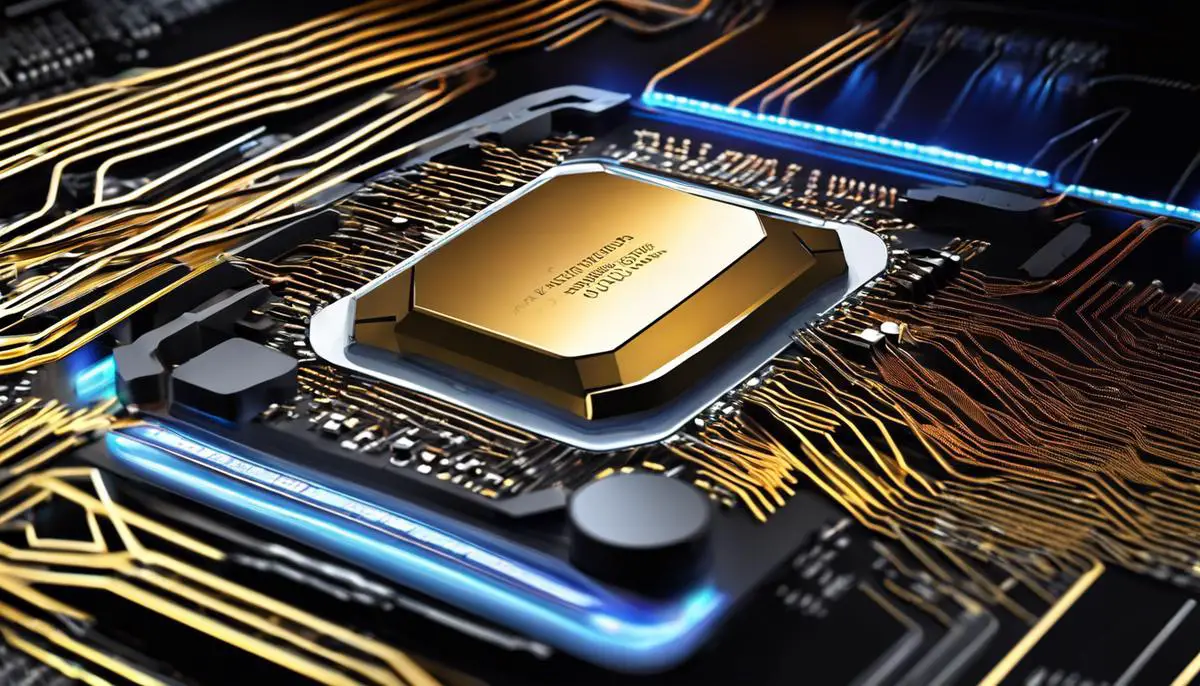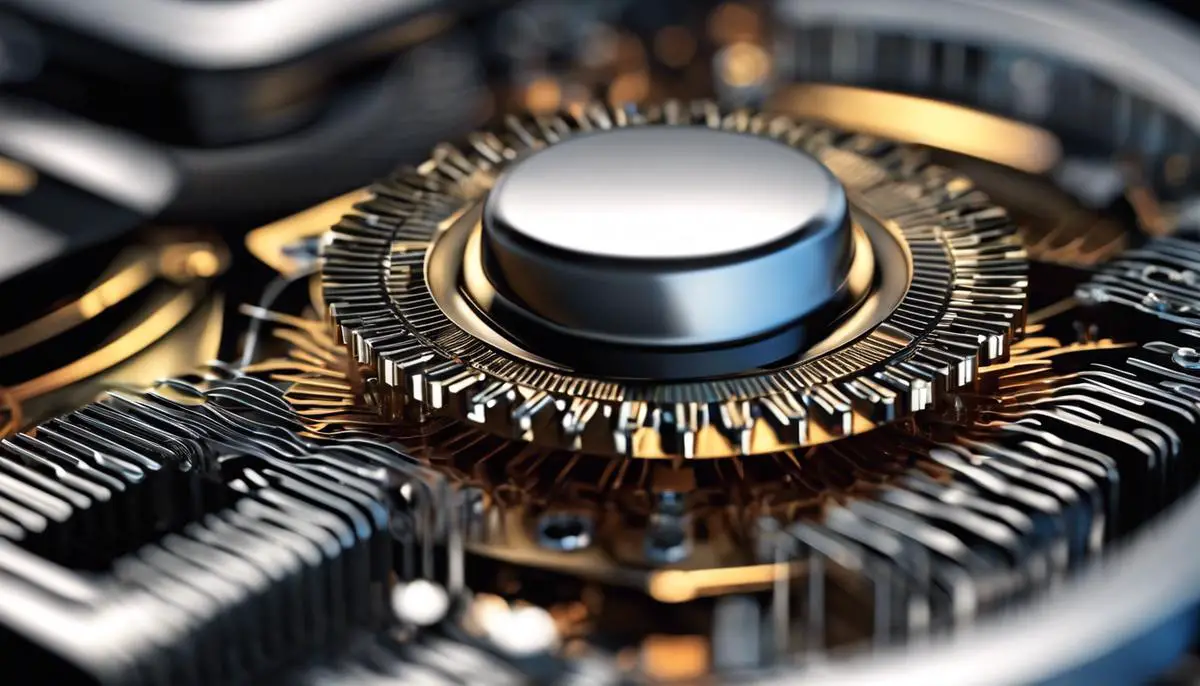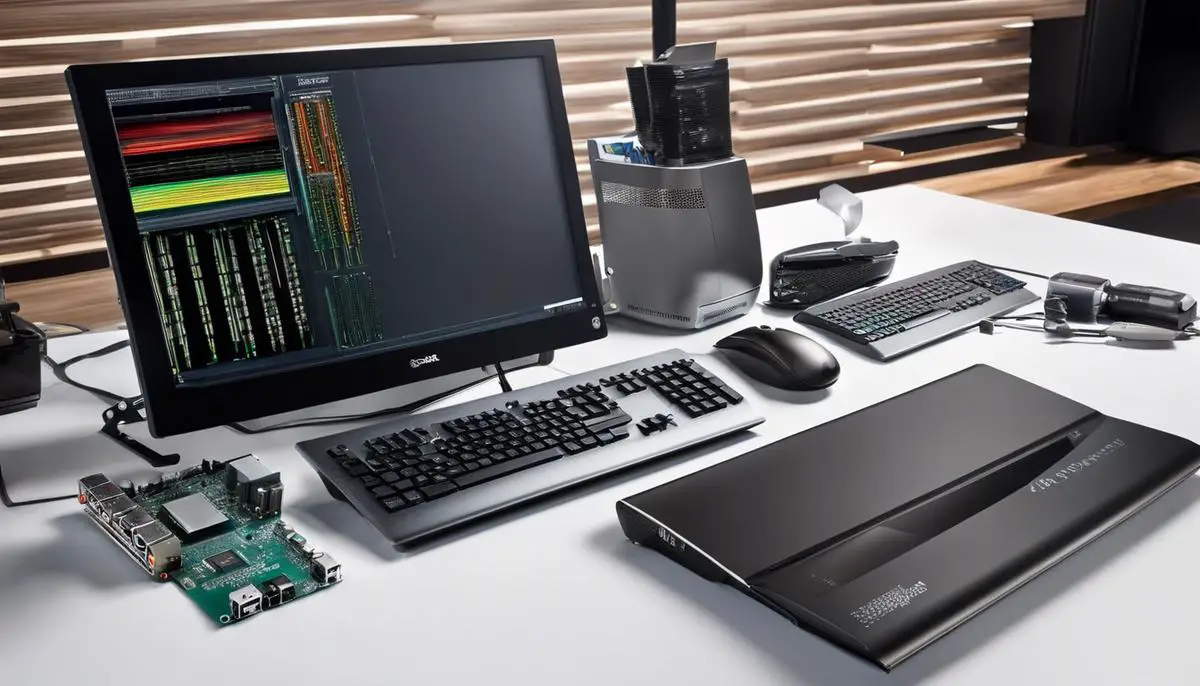In the digital era, where the visual and processing demands of software applications continue to surge, leveraging the full potential of your computer’s hardware has never been more crucial. Hardware acceleration acts as a catalyst, tapping into the specialized capabilities of a computer’s Graphics Processing Unit (GPU) to elevate performance and improve the efficiency of tasks ranging from daily web browsing to intensive graphics design. This discourse will unveil the intricacies of hardware acceleration, guiding you through the concept, its practical applications, and the significant enhancements it can bring to your computing experience.
Understanding Hardware Acceleration
Unlocking Performance Gains with Hardware Acceleration: A Tech Enthusiast’s Guide
Understanding hardware acceleration is like putting your computer on a performance-enhancing diet. It’s not about stuffing more raw power under the hood; it’s about making existing parts work smarter, not harder. Here’s a deep dive into what hardware acceleration is and how it significantly boosts performance.
What Is Hardware Acceleration?
In essence, hardware acceleration refers to the process of offloading tasks, typically handled by the CPU (central processing unit), to other components of the computer, such as the GPU (graphics processing unit), to perform more efficiently. This specialized form of task delegation isn’t new, but it’s becoming increasingly critical as applications demand more from our systems.
How Does Hardware Acceleration Work?
Let’s get technical but remain clear—hardware acceleration takes advantage of specific hardware to optimize computing performance. When activated, tasks such as graphics rendering, video playback, or complex calculations can tap into specialized processors. For instance, GPUs can handle floating-point calculations and geometric data much quicker than CPUs because they’re designed to perform parallel operations, which is excellent for processing pixels and vertices.
The Multiplier Effect on Performance
Activating hardware acceleration is a game-changer. Take graphics-intensive tasks: without hardware acceleration, the CPU struggles, juggling multiple tasks and slowing down overall performance. Flip the hardware acceleration switch, and the GPU sprints, taking the load off the CPU and accelerating the graphics performance, resulting in smoother video playback, faster rendering times, and more fluid gaming experiences.
Enable Hardware Acceleration Right Now
Want this performance boost? Here’s how to enable hardware acceleration in a few common scenarios:
- Web Browsers: Dig into the settings panel of your favorite browser—be it Chrome, Firefox, or Edge—and look for a section on performance. Toggle on ‘Use hardware acceleration when available’ and relaunch.
- Windows 10/11: Search for ‘Graphics settings’ in the Start menu, and under ‘Default settings’, switch on ‘Hardware-accelerated GPU scheduling’. A reboot may be necessary to set this live.
- Video Editing Software: In applications like Adobe Premiere Pro, access ‘Project Settings’, select ‘General’, and under ‘Video Rendering and Playback’, choose a renderer that supports hardware acceleration, such as ‘Mercury Playback Engine GPU Acceleration’.
- Gaming: Explore the graphics settings within the game or the graphics control panel like NVIDIA Control Panel or AMD Radeon Settings. Look for options that enable hardware features, DirectX 12, or Vulkan APIs for enhanced graphics performance.
By configuring hardware acceleration, users coax out superior performance from their tech investments, empowering devices to handle more tasks simultaneously and with greater efficiency. It’s a straightforward yet powerful way to leverage the full potential of hardware and enhance system responsiveness. Now, set up hardware acceleration and watch those performance metrics soar. No summary needed; test it. The proof will be in the seamless execution of every command.

Enabling Hardware Acceleration in Browsers
Unlock the Full Potential of Your Browser with Hardware Acceleration
Harnessing the power of hardware acceleration can significantly enhance your browsing experience, allowing web content to load with phenomenal speed and smoother performance. Here’s a tech-savvy guide to activating this feature in the most popular web browsers.
Google Chrome
- Open Settings: Click the three dots in the top right corner, and navigate to Settings.
- Advanced Settings: Scroll down and click on “Advanced” to reveal more options.
- System Section: Look for the ‘System’ section in the advanced settings menu.
- Toggle Hardware Acceleration: Find “Use hardware acceleration when available” and toggle it on.
- Relaunch: Finally, relaunch Chrome for the changes to take effect.
Mozilla Firefox
- Access Menu: Click the hamburger icon (three horizontal lines) in the upper-right corner, and select “Options”.
- General Panel: Scroll to the “Performance” section. By default, Firefox uses hardware acceleration if available.
- Override Default Settings: Uncheck “Use recommended performance settings” to reveal the hardware acceleration option.
- Enable Hardware Acceleration: Check “Use hardware acceleration when available” box.
- Restart Firefox: Close and reopen to implement the new setting.
Microsoft Edge
- Open Edge Menu: Click on the three dots in the top right corner of the browser, and click on “Settings”.
- Navigate to System: On the left pane, click on “System and Performance”.
- Hardware Acceleration: Flip the switch on for “Use hardware acceleration when available”.
- Restart Edge: You’ll be prompted to restart Edge to apply these changes.
Apple Safari
Apple Safari automatically uses hardware acceleration when it’s available. There’s no specific toggle for users to manually turn it on or off. Apple optimizes Safari to work efficiently with the hardware present in Macs, iPhones, and iPads.
Checking If Hardware Acceleration Is Working
After enabling hardware acceleration, it’s sound practice to verify its activation. Most browsers come with in-built tools or paths for assessment:
- Google Chrome: Navigate to
chrome://gputo see detailed information about the GPU and confirm hardware acceleration status. - Mozilla Firefox: Type
about:supportand look under the “Graphics” section for confirmation.
Important Considerations
Before diving headlong into hardware acceleration, ponder these points:
- Hardware Capabilities: Make sure your hardware supports acceleration. Sometimes, outdated graphics drivers or hardware can hinder performance even after enabling the feature.
- Possible Glitches: On rare occasions, hardware acceleration might introduce graphical glitches or stability issues. If faced with such anomalies, consider updating your drivers or toggling the feature off temporarily.
To wrap up, flipping on hardware acceleration is a sound move for those seeking an optimized, sprightly web experience. The procedure is simple, often offering a noticeable uptick in performance for multimedia tasks without demanding manual, repetitive adjustments from users. Whether for casual browsing, video streaming, or engaging with rich web applications, empowering your browser with hardware acceleration is a pragmatic step forward in the digital domain.

Checking Compatibility and Troubleshooting
Verifying Hardware Acceleration Compatibility and Troubleshooting Issues
Ensuring that your system is optimized for hardware acceleration can be game-changing for performance. So, here’s the lowdown on how to verify if your system can handle it and what to do if you hit any snags.
System Requirements Check
First thing’s first: does your hardware meet the prerequisites for hardware acceleration? You’ll need a compatible CPU and a GPU that supports Direct3D 9 or later for Windows, or Metal for macOS. To check your GPU capabilities:
- On Windows, run “dxdiag” from the Run dialog (Win + R).
- In the DirectX Diagnostic Tool, switch to the “Display” tab.
- Check for Direct3D acceleration status. If it says “Enabled,” you’re ready to go.
Driver Updates
Out-of-date drivers are common culprits when there’s a failure to launch. Always keep these updated:
- Use your operating system’s update feature (Windows Update on Windows 10/11, Software Update on macOS).
- Visit the manufacturer’s website for your GPU to download the latest drivers.
Troubleshooting Tips
If you’re experiencing instability or performance issues with hardware acceleration, here’s a step-by-step approach to troubleshooting:
- Performance Monitoring: Use Task Manager on Windows (Ctrl + Shift + Esc) or Activity Monitor on macOS to check GPU usage. Low or zero utilization alongside poor performance might suggest a problem.
- Disabling and Re-enabling: Sometimes toggling hardware acceleration off and back on can resolve hitches.
- Safe Mode: Boot into Safe Mode (Windows) or Safe Boot (macOS) to check if third-party drivers are causing issues.
- Check for Conflicts: Remove or disable any recently installed software to rule out conflicts.
- Reset Settings to Default: For browsers, sometimes resetting the settings to default can iron out any anomalies.
- BIOS Settings: Dive into your system’s BIOS settings to ensure any relevant GPU or chipset settings are correctly configured for optimal performance.
- Check for Overheating: Hardware can throttle performance to protect itself from damage caused by excessive heat. Ensure your system is clean and well-ventilated.
Final Thought
With an analytical approach and a knack for problem-solving, troubleshooting hardware acceleration issues is manageable. Methodically check your system’s compatibility, maintain up-to-date drivers, and systematically work through potential fixes. Remember, performance gains await on the other side of these technical challenges. No need to summarize; you’ve got the tools, now get to work.

By embracing hardware acceleration in your daily computing activities, you unlock a world of enhanced performance and fluid user experiences. Whether you are a graphic designer seeking to streamline complex rendering tasks or an everyday user aiming for a seamless browsing adventure, understanding and utilizing hardware acceleration is paramount. Equipped with the knowledge to enable this feature in your web browsers, to assess compatibility, and to address any hurdles, you can now steer your digital journey on a path of accelerated efficiency and heightened productivity.